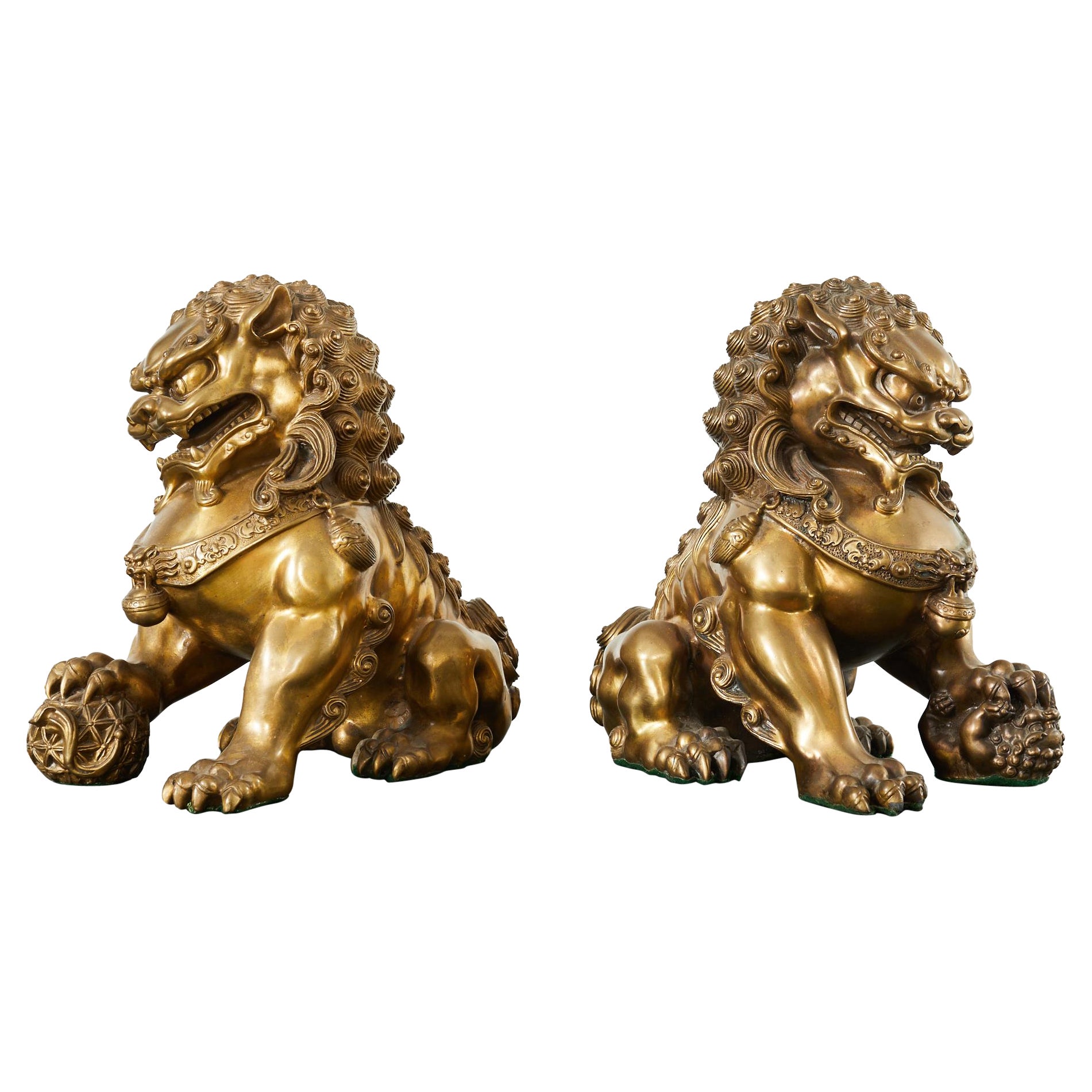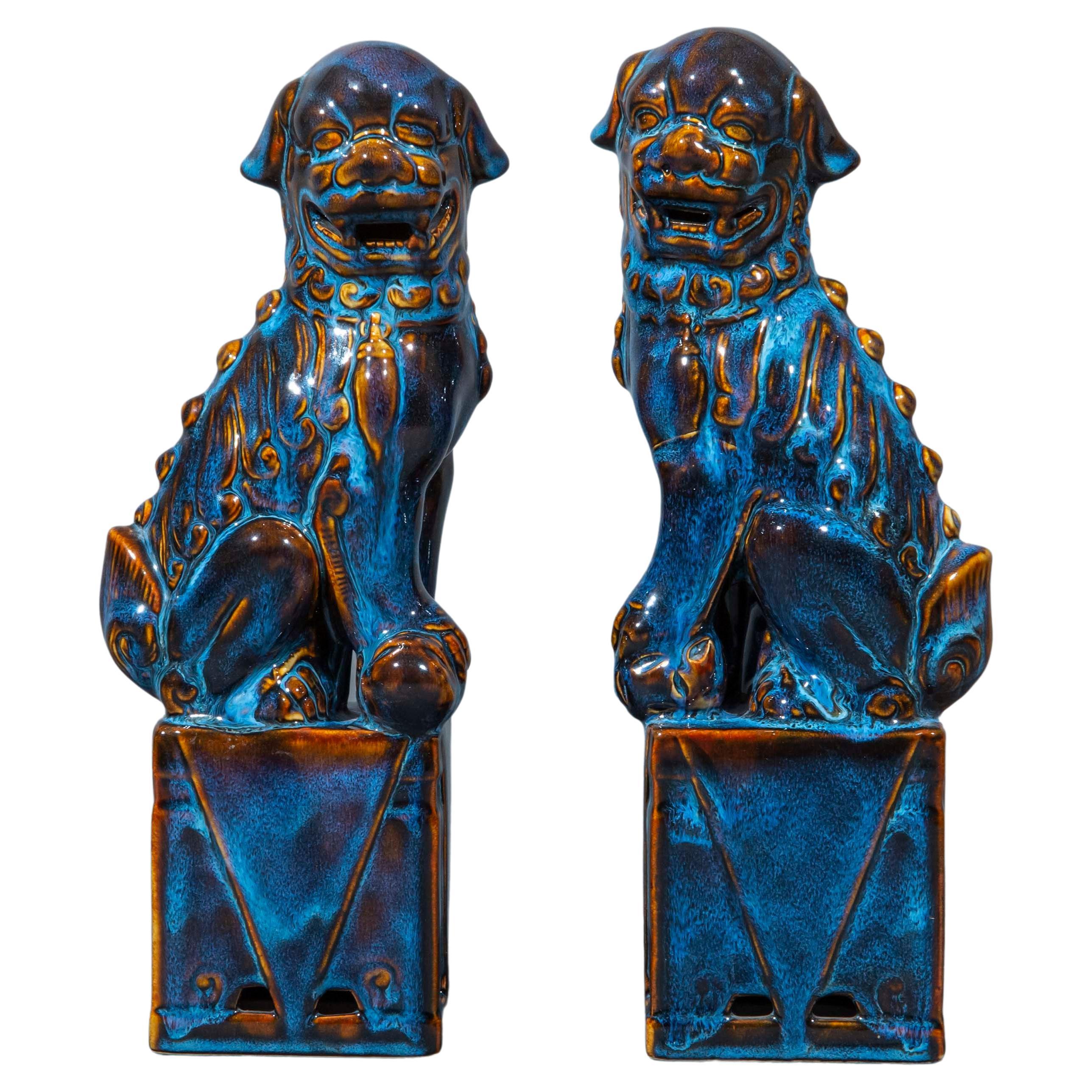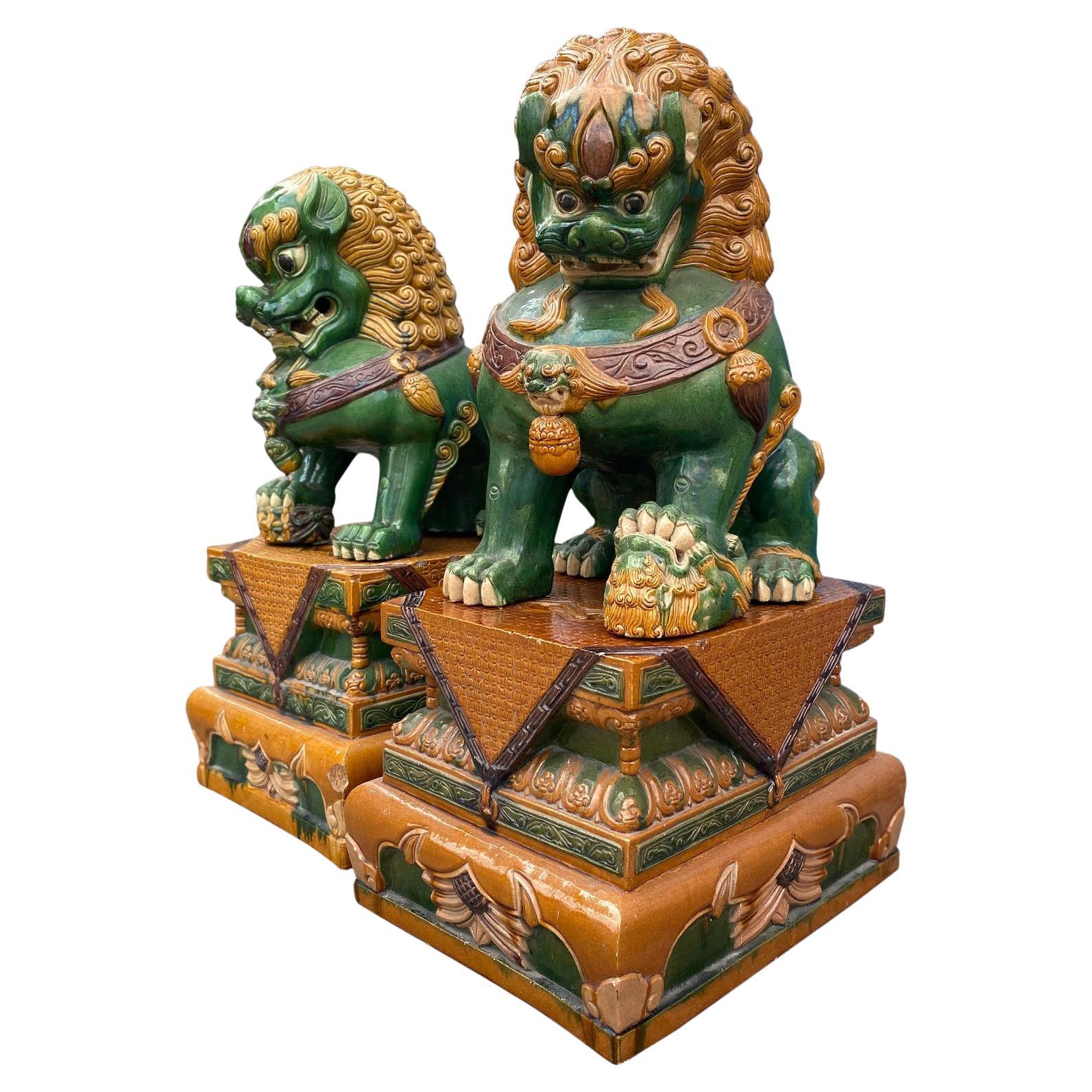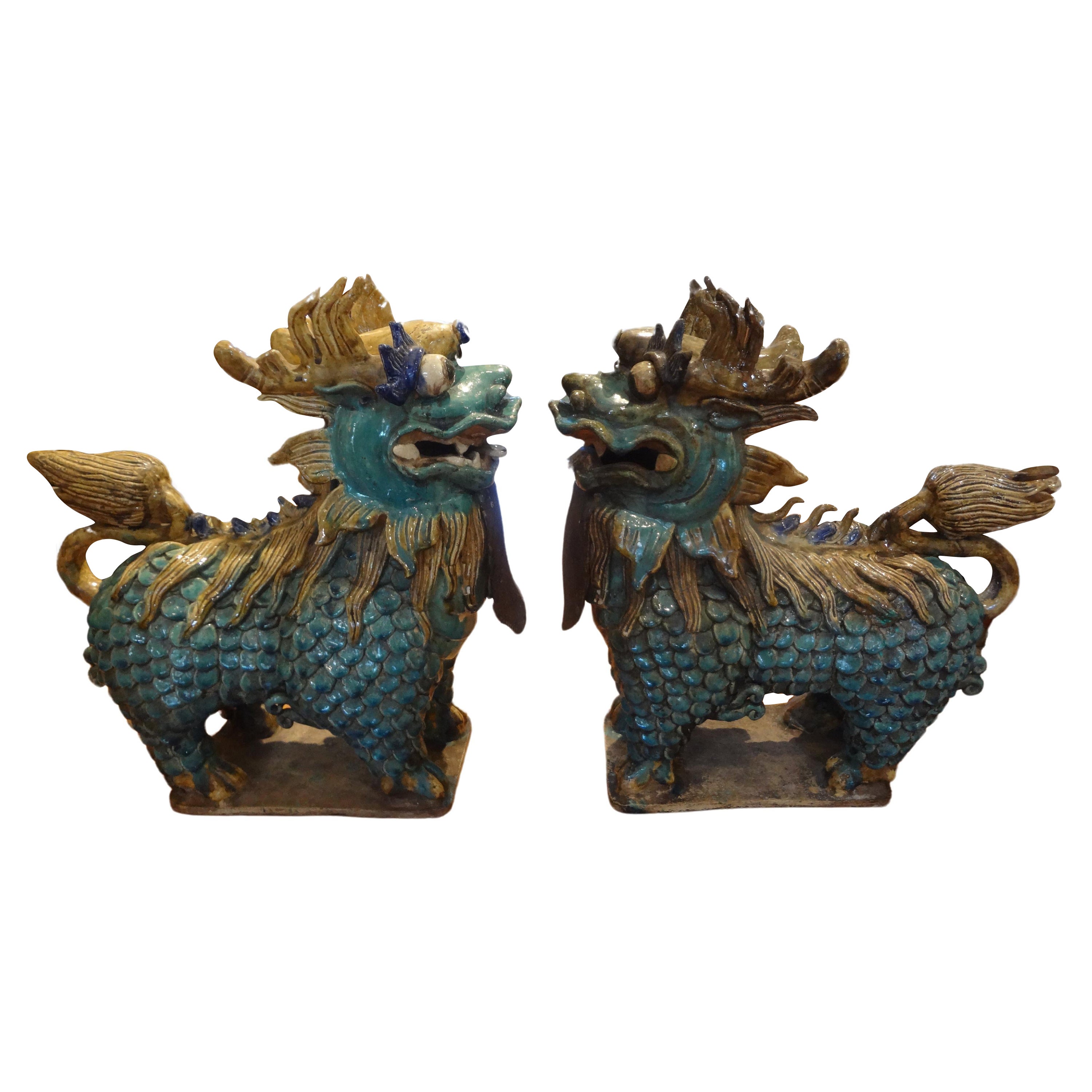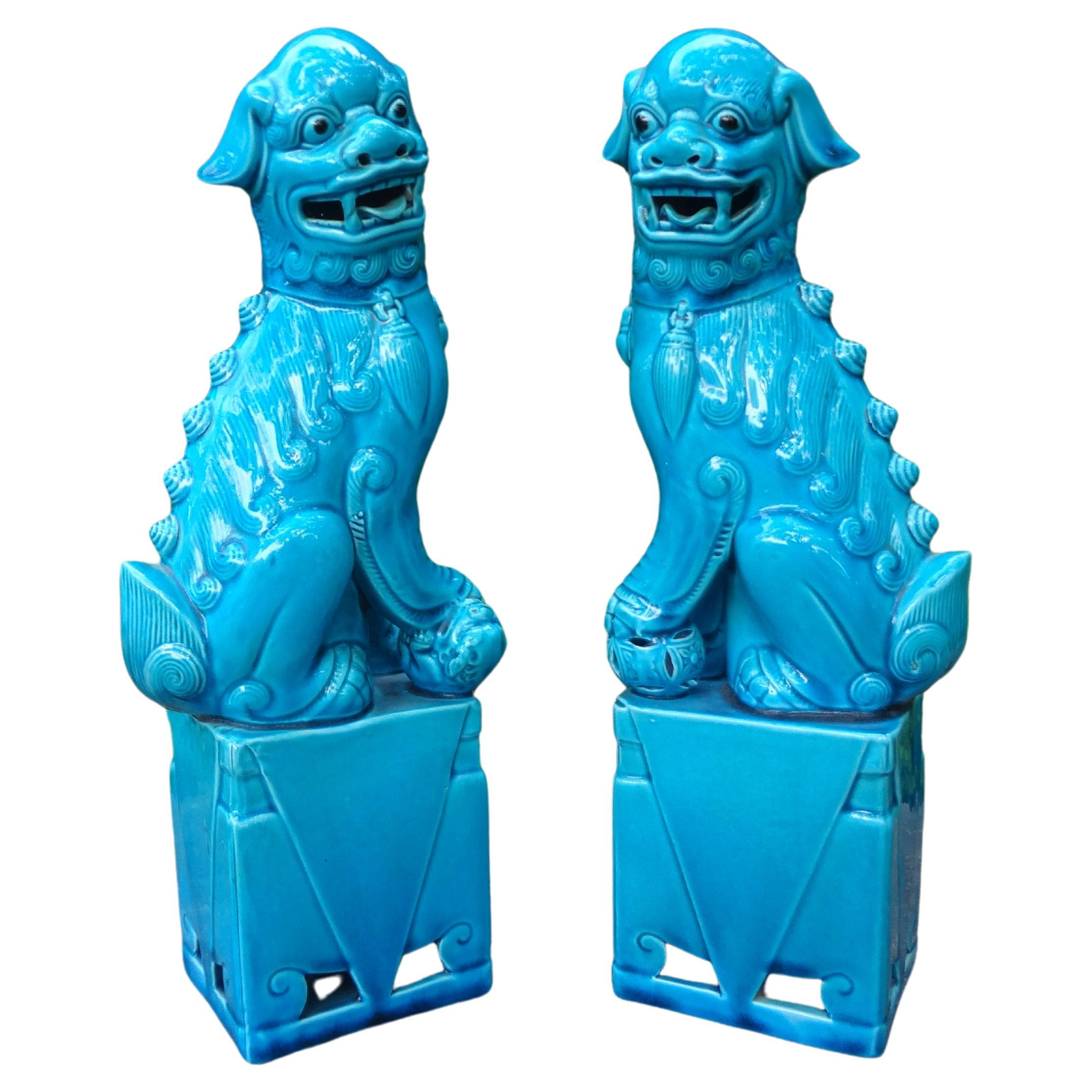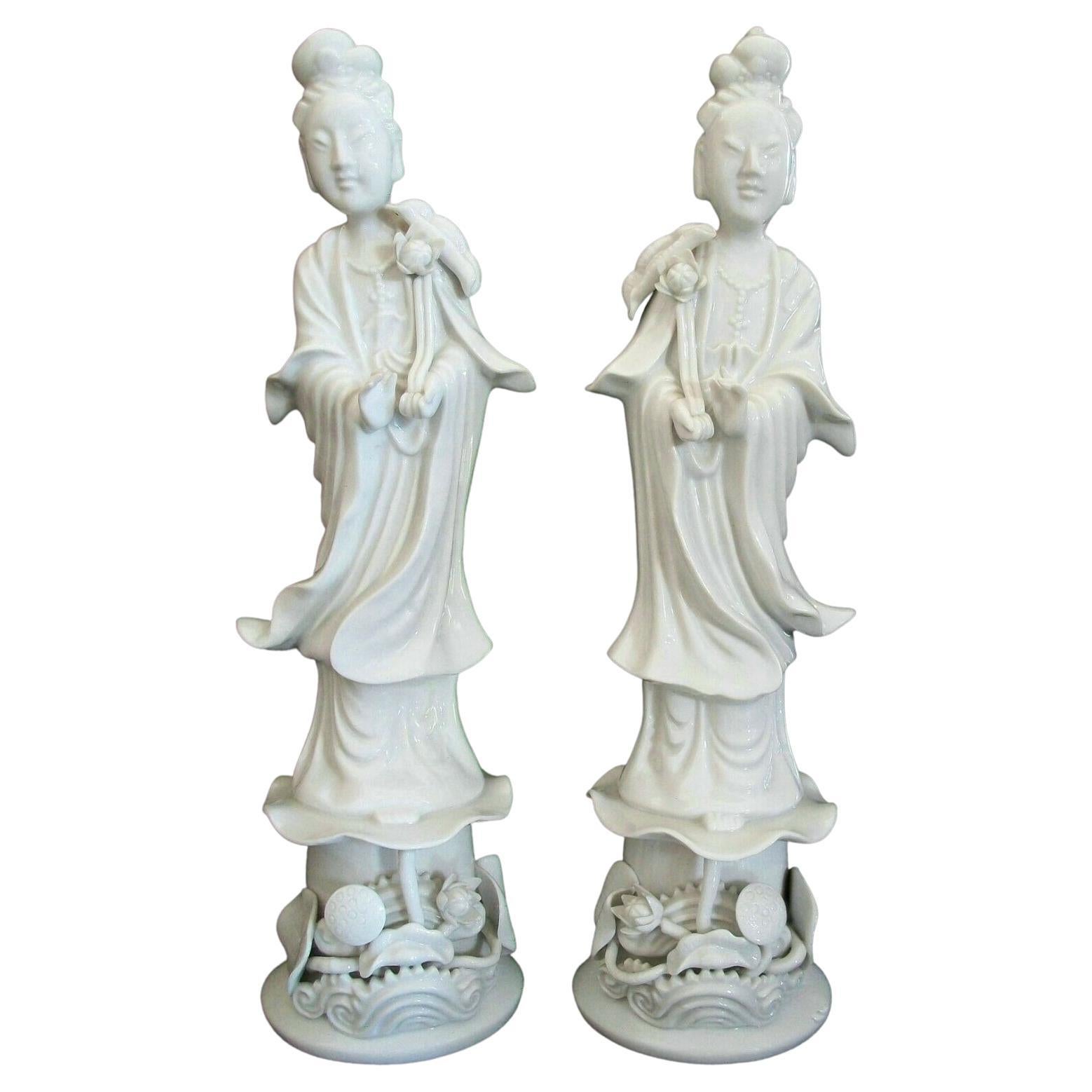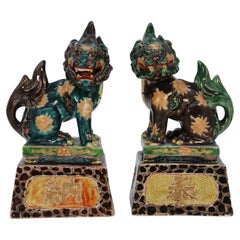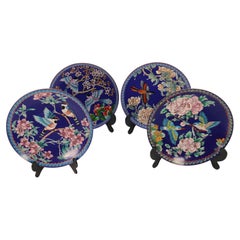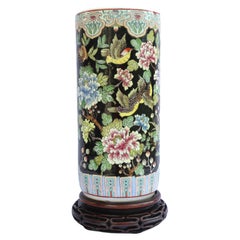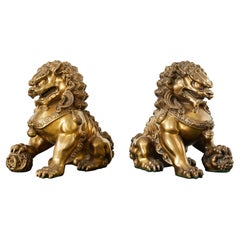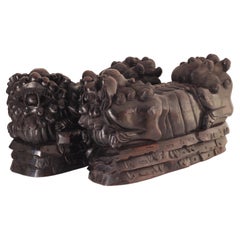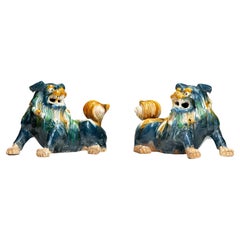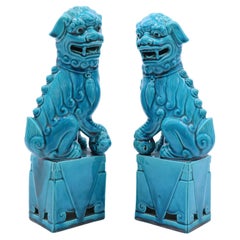
Pair of Porcelain Chinese Buddhist Temple Lions or Foo Dogs, circa 1900
View Similar Items
Want more images or videos?
Request additional images or videos from the seller
1 of 21
Pair of Porcelain Chinese Buddhist Temple Lions or Foo Dogs, circa 1900
About the Item
- Dimensions:Height: 12.01 in (30.5 cm)Width: 4.73 in (12 cm)Depth: 3.15 in (8 cm)
- Sold As:Set of 2
- Style:Chinese Export (Of the Period)
- Materials and Techniques:
- Place of Origin:
- Period:
- Date of Manufacture:1900
- Condition:Wear consistent with age and use.
- Seller Location:Central England, GB
- Reference Number:1stDibs: LU6434231528102
About the Seller
No Reviews Yet
Vetted Seller
These experienced sellers undergo a comprehensive evaluation by our team of in-house experts.
Established in 1984
1stDibs seller since 2022
15 sales on 1stDibs
Typical response time: 6 hours
More From This SellerView All
- A highly decorative pair of Chinese pottery Buddhist lions circa 1900.Located in Central England, GBAn unusual pair of 19th century Chinese hand painted and richly glazed pottery seated Buddhist lions. They are each raised onto a stepped plinth with gilt character marks on the fron...Category
Early 20th Century Chinese Chinese Export Pottery
MaterialsPottery
- Chinese set of four cloisonne plates depicting birds and blossom, circa 1930Located in Central England, GBThis beautiful and vibrant set of four Chinese cloisonne wall or cabinet plates is most eyecatching. The design of exotic birds amongst branches with a flowering blossom is very well done with fine wires forming the design over a brass base which is then filled and fired with rich coloured glass enamels which are then ground and polished smooth to show the intricate design. Each plate is completely different but made to be a set of four which will display well as a wall hanging group or in a cabinet. Chinese, circa 1930 Height 2.5cm x width 18cm x depth 18cm We hope you enjoyed looking at this wonderful set of Chinese enamel cloisonne plates...Category
Mid-20th Century Chinese Chinese Export Ceramics
MaterialsEnamel
- A large Chinese famille noire porcelain vase and original hardwood stand.Located in Central England, GBThis most decorative large Chinese famille noire vase or possibly a walking stick stand dates to circa 1930 and it is richly decorated over a black enamel background (noire) with thi...Category
Early 20th Century Chinese Chinese Export Ceramics
MaterialsEnamel
- A 19th century Chinese miniature carved giltwood figure group circa 1890Located in Central England, GBThis remarkable miniature Chinese/Cantonese carved hardwood and gold leaf figure group depicts a group of five scholars, two of them holding a large object while the other three are ...Category
Antique 1890s Chinese Chinese Export Sculptures and Carvings
MaterialsGiltwood
- 19th century Chinese bronze cencer with Buddhist lion decoration circa 1860Located in Central England, GBThis large Chinese bronze censer dates to circa 1860. It is made in three parts, stand, vessel, and lid. The lid has pierced decorative panels with pine trees and a bold Buddhist lion finial for lifting. The censer has lifting handles in the shape of bamboo to each side and again also has panels with pine forests with mythical beasts and side mounts in the form of Buddhist lion mastheads. It is raised on four shaped legs with a beast mask head at the top and sits on the raised and pierced stand. The decoration on this piece is all hand finished with chasing and engraving giving good detail. The censer has a green/brown patina. Circa 1860 Censers are a type of vessel for burning incense. In many cultures burning incense has spiritual and religious connotations which influence the design and decoration of the censer. The lion is one of Buddhism’s most potent symbols. Traditionally the lion is associated with regality, strength and power. It is therefore an appropriate symbol of Buddha who, tradition has it, was a regal prince. As Buddhist priests and monks from India, they brought with them stories of stone Asiatic lions...Category
Antique Mid-19th Century Chinese Chinese Export Metalwork
MaterialsBronze
- An early 20th century Chinese cloisonne sculpture of a five clawed dragon c 1930Located in Central England, GBAn early 20th century Chinese decorative cloisonne sculpture of a five clawed dragon gripping a ball. This bright and unusual dragon is a Chinese ...Category
Vintage 1930s Chinese Chinese Export Sculptures and Carvings
MaterialsCopper
You May Also Like
- Pair of Chinese Bronzed Metal Buddhist Temple Foo Dogs LionsLocated in Rio Vista, CASpectacular pair of Chinese Buddhist guardian temple foo dogs or foo lions intricately crafted from bronzed metal. The lions are depicted sitting with one having a paw on a ball or o...Category
20th Century Chinese Qing Sculptures and Carvings
MaterialsMetal
- A pair of 19th Century carved Foo temple dogs or Chinese guardian LionsLocated in London, GBChinese guardian lions, or imperial guardian lions, are a traditional Chinese architectural ornament. Typically made of stone, they are also known as stone lions or shishi (石獅; shíshī). They are known in colloquial English as lion dogs or foo dogs / fu dogs. The concept, which originated and became popular in Chinese Buddhism, features a pair of highly stylized lions—often one male with a ball and one female with a cub—which were thought to protect the building from harmful spiritual influences and harmful people that might be a threat. Used in imperial Chinese palaces and tombs, the lions subsequently spread to other parts of Asia including Japan (see komainu), Korea, Philippines, Tibet, Thailand, Myanmar, Vietnam, Sri Lanka, Nepal, Cambodia, Laos, and Malaysia. There has been extensive interaction between Chinese mythology and Confucianism, Taoism, and Buddhism. Elements of pre-Han dynasty mythology such as those in Classic of Mountains and Seas were adapted into these belief systems as they developed (in the case of Taoism), or were assimilated into Chinese culture (in the case of Buddhism). Elements from the teachings and beliefs of these systems became incorporated into Chinese mythology. For example, the Taoist belief of a spiritual Paradise became incorporated into mythology as the place where immortals and deities used to dwell. Sometimes mythological and religious ideas have become widespread across China's many regions and diverse ethnic societies. In other cases, beliefs are more limited to certain social groups, for example, the veneration of white stones by the Qiang. One mythological theme that has a long history and many variations involves a shamanic world view, for example in the cases of Mongolian shamanism among the Mongols, Hmong shamanism among the Miao people, and the shamanic beliefs of the Qing dynasty from 1643 to 1912, derived from the Manchus. Politically, mythology was often used to legitimize the dynasties of China, with the founding house of a dynasty claiming a divine descent. Mythology and philosophy. Further information: Chinese philosophy True mythology is distinguished from philosophical treatises and theories. Elaborations on the Wu Xing are not really part of mythology, although belief in five elements could appear. The Hundred Schools of Thought is a phrase suggesting the diversity of philosophical thought that developed during the Warring States of China. Then, and subsequently, philosophical movements had a complicated relationship with mythology. However, as far as they influence or are influenced by mythology, divides the philosophical camps into two rough halves, a Liberal group and a Conservative group. The liberal group being associated with the idea of individuality and change, for example as seen in the mythology of divination in China, such as the mythology of the dragon horse that delivered the eight bagua diagrams to Fu Xi, and methods of individual empowerment as seen in the Yi Jing (Book of Changes). The Liberal tendency is towards individual freedom, Daoism, and Nature. The relationship of the Conservative philosophies to mythology is seen in the legendary Nine Tripod Cauldrons, mythology about the emperors and central bureaucratic governance, Confucianism, written histories, ceremonial observances, subordination of the individual to the social groups of family and state, and a fixation on stability and enduring institutions. The distinction between the Liberal and Conservative is very general, but important in Chinese thought. Contradictions can be found in the details, however these are often traditional, such as the embrace by Confucius of the philosophical aspects of the Yi Jing, and the back-and-forth about the Mandate of Heaven wherein one dynasty ends and another begins based according to accounts (some of heavily mythological) where the Way of Heaven results in change, but then a new ethical stable dynasty becomes established. Examples of this include the stories of Yi Yin, Tang of Shang and Jie of Xia or the similar fantastic stories around Duke of Zhou and King Zhou of Shang. Mythology exists in relationship with other aspects of society and culture, such as ritual. Various rituals are explained by mythology. For example, the ritual burning of mortuary banknotes (Hell Money), lighting fireworks, and so on. A good example of the relationship of Chinese mythology and ritual is the Yubu, also known as the Steps or Paces of Yu. During the course of his activities in controlling the Great Flood, Yu was supposed to have so fatigued himself that he lost all the hair from his legs and developed a serious limp. Daoist practitioners sometimes incorporate a curiously choreographed pedal locomotion into various rituals. Mythology and practice, one explains the other: in these rituals, the sacred time of Yu merges with the sacral practice of the present. Various ideas about the nature of the earth, the universe, and their relationship to each other have historically existed as either a background or a focus of mythologies. One typical view is of a square earth separated from a round sky by sky pillars (mountains, trees, or undefined). Above the sky is the realm of Heaven, often viewed of as a vast area, with many inhabitants. Often the heavenly inhabitants are thought to be of an "as above so below" nature, their lives and social arrangements being parallel to those on earth, with a hierarchical government run by a supreme emperor, many palaces and lesser dwellings, a vast bureaucracy of many functions, clerks, guards, and servants. Below was a vast under ground land, also known as Diyu, Yellow Springs, Hell, and other terms. As time progressed, the idea of an underground land in which the souls of the departed were punished for their misdeeds during life became explicit, related to developments in Daoism and Buddhism. The underground world also came to be conceived of as inhabited by a vast bureaucracy, with kings, judges, torturers, conductors of souls, minor bureaucrats, recording secretaries, similar to the structure of society in the Middle Kingdom (earthly China). Chinese temple Dogs...Category
Antique 1860s Chinese Chinese Export Sculptures and Carvings
MaterialsHardwood
- Pair Early 20th Century Chinese Ceramic Foo DogsLocated in Silvolde, GelderlandLow fired ceramic Chinese "Ming" style pair matching Foo Dogs with beautiful cracked and dripped glazed four color finish. This beautiful couple Foo Dogs is visibly handmade because the prints of the fingers the artist are visible in the earthenware. These Foo Dogs makes displayed in your place a great...Category
Early 20th Century Chinese Ming Ceramics
MaterialsEarthenware
$1,300 Sale Price / set30% Off - Pair of Chinese Flambe Glazed Foo Dogs or LionsLocated in Richmond, LondonA wonderfully decorative pair of porcelain foo dogs, or guardian lions, beautifully glazed with purple and blue streaks China, 20th century ...Category
20th Century Chinese Qing Ceramics
MaterialsPorcelain
$2,299 / set - Antique Large Pair of Porcelain Polychrome Foo Dogs, Chinese, circa 1900Located in Torino, ITFine large pair of polychrome glazed "Famille Jaune et Verte" porcelain foo dogs, one female with pup the other male with front paw resting on pierced ball, decorated in overglaze en...Category
Early 20th Century Chinese Ceramics
MaterialsPorcelain
- Antique Large Pair of Porcelain Polychrome Foo Dogs, Chinese, circa 1900Located in Torino, ITFine large pair of polychrome glazed "Famille Jaune et Verte" porcelain foo dogs, one female with pup the other male with front paw resting on pierced ball, decorated in overglaze en...Category
Early 20th Century Chinese Ceramics
